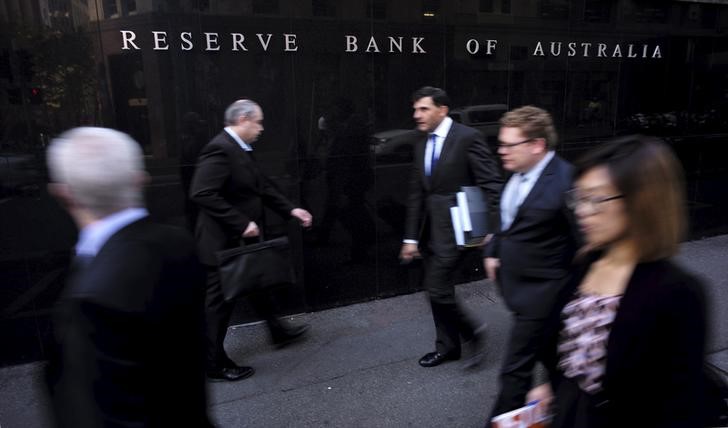By Ian Chua
SYDNEY (Reuters) - Australia's central bank left interest rates unchanged on Tuesday for a fifth straight month in a widely expected move and offered no clues to indicate it may change its steady stance any time soon.
The Reserve Bank of Australia (RBA) kept the cash rate at a record low 2.0 percent, where it has been since the last cut in May.
In a brief statement that was almost identical to the September note, the RBA reiterated that it would look to upcoming data to judge if the current policy setting needed to be adjusted.
"The available information suggests that moderate expansion in the economy continues," the RBA said.
"Overall, the economy is likely to be operating with a degree of spare capacity for some time yet, with domestic inflationary pressures contained."
Given this backdrop, the RBA said monetary policy needed to be accommodative, a view it has repeated in previous meetings.
The decision and an absence of any expressed anxiety about slowing growth in China, Australia's single biggest export market, gave the currency a bit of a boost.
The Aussie dollar <AUD=D4> popped above 71 U.S. cents for the first time in two weeks, pulling further away from a 6-1/2 year low of $0.6892 set last month.
The RBA again said the currency was adjusting to the significant declines in key commodity prices.
"We have the RBA on hold from here," said Tom Kennedy, economist at JPMorgan (NYSE:JPM).
"It will come down to what happens in places like China and Japan and how their economies play out in next two to three quarters."
Indeed, the health of Australia's key trading partners like China is seen as a major risk for an economy that is struggling with a prolonged downturn in mining investments.
Falling prices for major commodity exports are already hitting company profits, national income and government tax revenues, eating into nominal GDP growth.
Data earlier in the day showed Australia's trade position worsened unexpectedly in August, extending a string of deficits stretching back to April 2014.
Figures from the Australian Bureau of Statistics showed the trade deficit grew to A$3.1 billion ($2.2 billion), from an upwardly revised A$2.8 billion the previous month.
The deterioration was partly driven by weakness in export values, a feature that is likely to persist as long as commodity prices stay under pressure.

($1 = A$1.41)